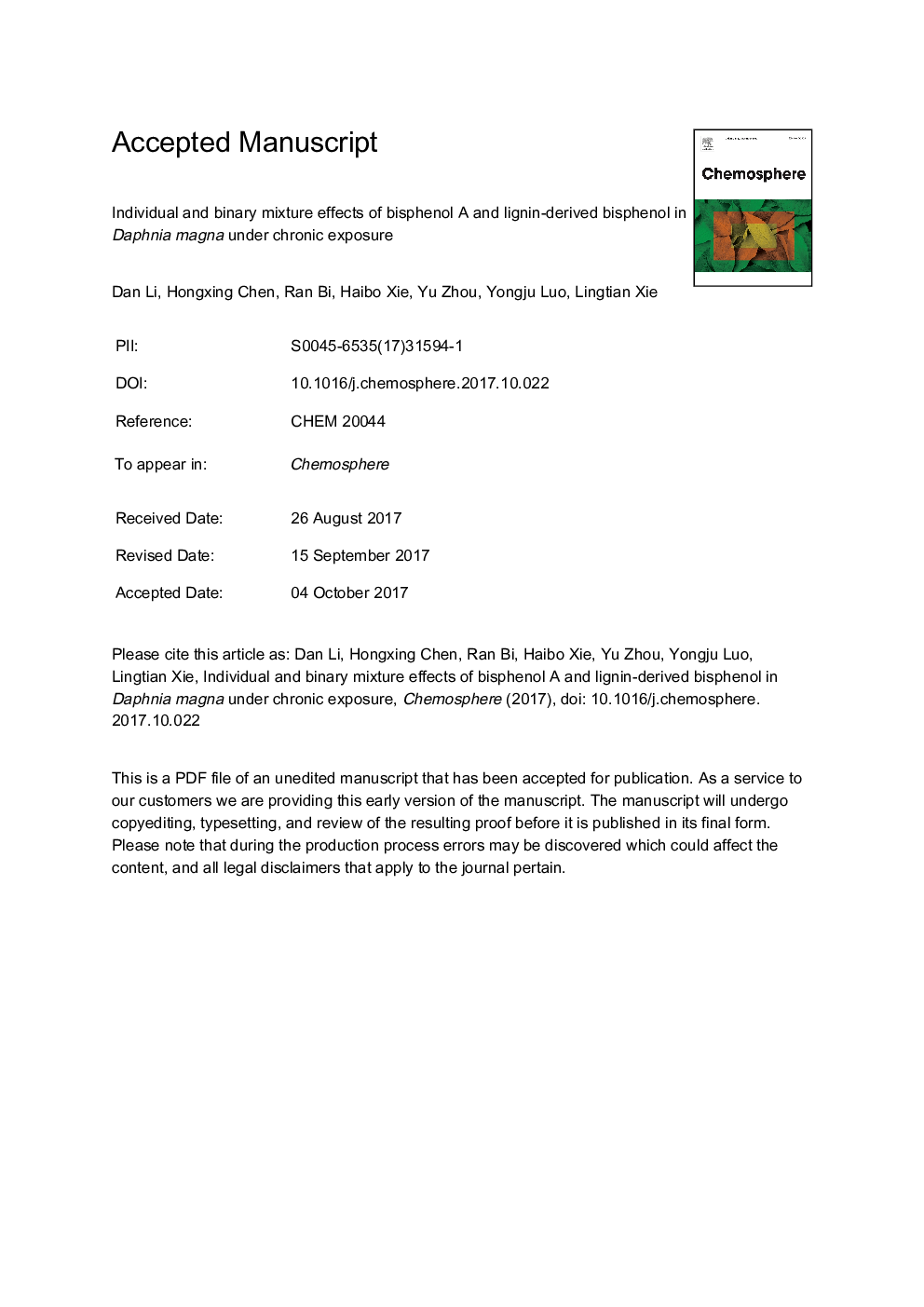| Article ID | Journal | Published Year | Pages | File Type |
|---|---|---|---|---|
| 8852881 | Chemosphere | 2018 | 37 Pages |
Abstract
In recent years, many new chemicals have been synthesized from biomass with an aim for sustainable development by replacing the existing toxic chemicals with those having similar properties and applications. However, the effects of these new chemicals on aquatic organisms remain relatively unknown. In this study, the effects of bisphenol A (BPA) and lignin-derived bisphenol (LD-BP, a BPA analogue) on Daphnia magna were evaluated. The animals were exposed to BPA, LD-BP, and their binary mixture at concentrations (2-2000 μg Lâ1) for 21 days. The expression of various biochemical markers and the effects on growth, molting, and reproduction parameters were examined. The results showed that the weight of daphnids significantly increased after exposure to BPA, LD-BP, and the binary mixture relative to that of the control animals. The activity of superoxide dismutase was significantly inhibited by LD-BP and the binary mixture. At the highest exposure concentration of the binary mixture, the activities of acetylcholinesterase and α-glucosidase, fecundity, and the number of neonates per brood were significantly altered. Our results showed that the effects of BPA and LD-BP on D. magna were generally comparable, except for the effect on the weight at their environmentally relevant concentrations (e.g., <20 μg Lâ1). The effects on the reproduction of D. magna could be mainly due to the shift in energy redistribution under BPA and LD-BP exposures. Our results implied that exposures to both BPA and LD-BP could potentially cause deleterious effects at the population level in D. magna.
Related Topics
Life Sciences
Environmental Science
Environmental Chemistry
Authors
Dan Li, Hongxing Chen, Ran Bi, Haibo Xie, Yu Zhou, Yongju Luo, Lingtian Xie,
